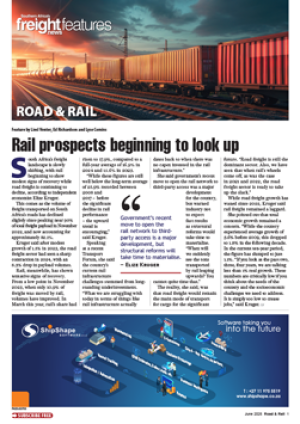Logistics in the retail sector is heading for “continuous disruption” over the next 12 to 18 months as the industry globally struggles to meet the demands of consumers who have been empowered by online shopping, with expectations of “having it all”, according to Rod Sides and Bryan Furman, editors of the 2019 Deloitte Retail Outlook. “The value chain across retail is becoming increasingly compressed. Many companies are accelerating their merchandise cycles, moving supply chains closer to the consumer, and deploying advanced technologies that can better connect them with consumers,” state the authors. “Without a supply chain that can deliver on the brand promise, even the leading and most innovative companies may find themselves quickly replaced. With median industry return on investment at a 20-year low, retailers should place additional weight on supply chain investments,” says the report. Areas in which retailers need to invest include supply chain automation, autonomous delivery fleets, reverse logistics, smart packaging and inventory orchestration. One of the automation opportunities is the repurposing of existing retail outlets as warehouses to accommodate online shopping. “Many retailers are exploring store redesign so that underperforming stores can be easily transformed to mini “dark stores” through automation. The authors see the autonomous delivery fleets helping retailers to reduce delivery costs and overcome labour shortages in developed markets. Reverse logistics needs to be reinvented to cater for the challenges being created by the 15% compound growth rate of e-commerce. “It becomes critical to have a reverse logistics strategy — versus a reverse logistics process. Allocating returns to the optimal channel can boost operational profitability and improve customer experience.” In-store costs can be reduced by smart packaging such as RFID product labels and computer-vision-friendly packaging design in order to automate check-out and stock management procedures. All the data being generated by automation presents retailers with the opportunity to “conduct” the supply of goods “across an orchestra of stakeholders – manufacturers, vendors, third-party logistics companies, distribution/ fulfilment centres and stores. “Retailers should understand all demand streams and consolidate into a single approach to enable the best use of inventory, powered by a digital core that can help them understand inventory movement from a bird’s-eye view,” state the authors.
INSERT


